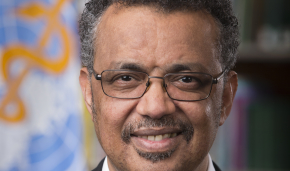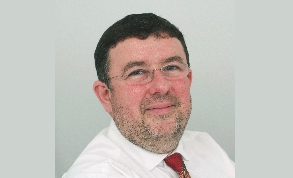Covid-19 reader: 7 January
How do booster programmes fit with vaccine equity?
World Health Organization, briefing
 The UK continues full steam ahead with its booster programme, reaching a peak of nearly 970,000 boosters or third doses delivered in a single day in the run up to Christmas. Daily totals are now on the rise again after lower numbers over the new year period. Some 35 million boosters or third doses have now been delivered, covering more than 60% of the population aged 12 and over.
The UK continues full steam ahead with its booster programme, reaching a peak of nearly 970,000 boosters or third doses delivered in a single day in the run up to Christmas. Daily totals are now on the rise again after lower numbers over the new year period. Some 35 million boosters or third doses have now been delivered, covering more than 60% of the population aged 12 and over.
However, this rapid roll-out of booster doses, driven by concerns about the much more transmissible Omicron variant and backed by all the major political parties, continues to be at odds with World Health Organization calls for countries to ‘walk the talk’ on vaccine equity.
Speaking at the end of December, WHO director-general Tedros Adhanom Ghebreyesus, said that 92 out of 194 member states had missed the target to vaccinate 40% of their populations by the end of 2021.
‘This is due to a combination of limited supply going to low-income countries for most of the year and then subsequent vaccines arriving close to expiry and without key parts – like the syringes!’ he said. ‘40% was doable. It’s not only a moral shame, it costs lives and provided the virus with opportunities to circulate unchecked and mutate.’
He added that vaccine supply was improving. But he warned that ‘the emphasis on boosters in rich countries could cause low-income countries to go short again’. He called on leaders of rich countries and manufacturers to work together to reach the further target for 70% of populations to be vaccinated by the middle of this year. At the current pace of roll-out 109 countries will miss this target.
In a further statement this week, Dr Tedros (pictured) highlighted the contrast between some countries moving towards fourth vaccinations, while others hadn’t had enough supply to vaccinate all health workers and those most at risk.
‘Booster after booster in a small number of countries will not end a pandemic while billions remain completely unprotected,’ he said.
In an earlier interim statement on booster doses, updated on 22 December, the WHO reported that about 20% of all Covid-19 vaccine doses daily were being used for booster or additional dose vaccination. It added that at least 126 countries worldwide had recommended booster programmes, with 120 already under way. The majority of these were classified as ‘high income’ or ‘upper middle income’. No low-income country had yet started a booster programme.
The WHO’s primary concern is the adoption of ‘broad-based booster programmes’, where additional vaccination is provided to population groups at lower risk of severe disease. Vaccine supply is projected to be sufficient for the entire global adult population with boosters for high-risk populations by the first quarter of 2022. However, it will only be later in 2022 that supply will be sufficient for extensive use of boosters in all adults.
WHO’s Strategic Advisory Group of Experts on Immunisation (Sage) is due to discuss booster vaccination again this month.
More than vaccines needed in Covid response
Public health experts, letter to The BMJ
A ‘vaccines-plus’ policy should be adopted across the world to slow the emergence of new Covid variants and enable them to be controlled by effective public health measures. This is the call by a large groups of public health experts, clinicians and scientists in an open letter this week to The BMJ.
Covid-19 has infected more than 278 million people globally with the World Health Organization recording at least 5.4 million deaths as of 26 December 2021.
The public health experts say that some countries have relied on a vaccines-only approach and seem willing to tolerate high levels of infection provided their healthcare systems can cope. However, they argue that the high transmissibility and degree of immune escape of recent variants mean sustained protective population immunity is unlikely to be achieved with the current vaccines based on the original strain.
High transmission risks more rapid adaptation, which could in turn lead to variants with increased transmissibility, enhanced antibody immune escape and greater severity of illness. The letter also points out that countries that have tolerated high transmission have seen rises in Covid-specific and all-cause mortality, healthcare worker shortages and repeated lockdowns to control surges in cases. Countries that suppressed transmission early saw reduced mortality and less economic damage.
The academics have called on the WHO and national governments to implement a five-point action plan. First, they should ‘unequivocally declare’ Covid-19 an airborne pathogen to remove confusion that has been used to justify outdated policies. The use of high-quality masks should be promoted for indoor gatherings and high-transmission settings. There should also be a ‘paradigm shift’ in the design and adaptation of buildings to provide effective ventilation and filtration of air.
They further call on governments to set criteria for imposing or relaxing measures to reduce Covid-19 based on the levels of transmission in the community. Effective test, trace, isolate and support mechanisms will be vital for maintaining low levels of transmission.
And measures should be put in place to achieve global vaccine equity, including vaccine sharing, the suspension of vaccine patents and the removal of technology transfer barriers. This should be accompanied by efforts to tackle misinformation about vaccine effectiveness.
The letter concludes by insisting that ‘vaccines-plus is affordable and achievable’ and points out that the policy has already been advocated by WHO director general Tedros Adhanom Ghebreyesus. Dr Tedros has previously commented that ‘vaccines alone will not get any country out of this crisis’.
Is the NHS riding out pressure on services?
Chris Hopson, tweet
Rising Covid hospitalisations, growing staff absences and large non-Covid demands are combining to put significant pressure on NHS services, according to NHS Providers’ chief executive Chris Hopson (pictured).
Prime minister Boris Johnson insisted this week that the country could ‘ride out’ the Omicron variant without further social restrictions. However, in a long Twitter thread, the head of the NHS representative body said that pressure experienced in London in recent weeks was now shifting to the rest of the country and was rising significantly and at pace.
He pointed to increases in hospitalisations over seven days of 85% in the North East and Yorkshire and 82% in the North West, with London now showing the lowest weekly growth rates (23%).
He added that infections were now fully hitting the older population and the service was yet to see the full impact of mixing over Christmas and New Year or of the return of schools. There was no guarantee that all regions would follow the pattern of London and that the NHS should be seen as a series of individual systems with their own local dynamics.
He said that trust chief executives outside the capital had pointed out that they face different demographics, patterns of infection, hospitalisation and sickness absence – all of which may mean they are less able to cope with pressures compared with London.
Some trusts are reporting staff absences as high as 19% with trusts outside London often finding it harder to fill shifts with agency or bank staff. And trusts are starting with different caseloads – with some reporting higher bed occupancy (Covid and non-Covid) than many London trusts. Social care is also in different positions across the country, with some areas struggling to discharge medically fit patients.
Mr Hopson predicted a varied pattern will emerge over the next days and weeks, with some trusts finding it easier to cope than others – around two dozen have already declared critical incidents. He also raised concerns that the current focus on NHS pressures could discourage some patients from coming forward for treatment or diagnosis. So the language used when talking about pressures will be important. However, he also called for the government to acknowledge the scale of current pressures, despite extraordinary efforts from frontline staff.
He stressed that the NHS did not have enough capacity pre-Covid to meet demand. And staff were being asked to work harder and harder to try to close the gap. ‘This is unsustainable,’ he said. ‘These issues must be addressed for the long term.’
Related content
The value masterclass shares examples of organisations and systems that have pursued a value-driven approach and the results they have achieved.
This webinar series offers colleagues of ICS organisations the opportunity to discuss common priorities, challenges, and successes within their field.